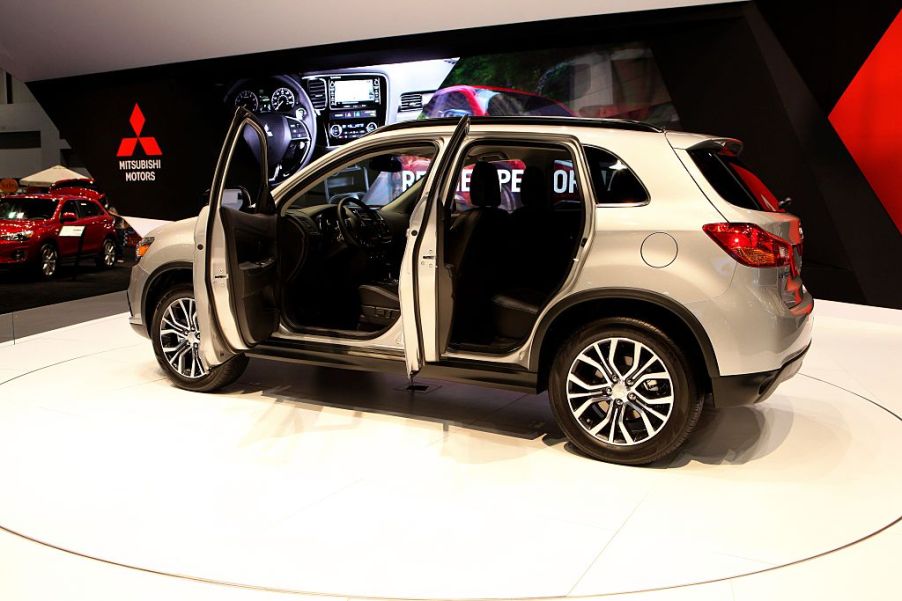
Why No One Wants to Buy the 2020 Mitsubishi Outlander Sport
Mitsubishi launched the Outlander Sport in 2011 as the subcompact crossover version of the midsize Outlander. Is it past its prime? Hard to say. When an aging car never really hit its prime in the first place, then it’s just aging and wanting. Wanting to be competitive, wanting somebody to buy it. But nothing in the 2020 Outlander Sport sets it apart from its competition, which is one top reason that no one wants to buy a car that Car and Driver dubs, “wholly uncompelling,” and past its sell-by date.
The Mitsubishi Outlander Sport’s sales numbers
When something is past its sell-by date, you can’t keep it very long without it going bad. For the Outlander Sport, it’s never really improved since its 2011 debut. So it hasn’t really gone bad, it’s just woefully stagnated, and the sales figures show it. They haven’t budged much since 2015:
- 2015: 36,966
- 2016: 33,067
- 2017: 33,160
- 2018: 39,153
- 2019: 33,644
Notice the sales drop from 2015-2016 and again between 2018 and 2019. The 2015 Outlander Sport’s electrical and transmission problems led to dead batteries, engine stalls and lack of acceleration. The 2018 Outlander Sport was recalled three times and was rated a one out of five in reliability through Consumer Reports. Each of these model years saw the next year’s sales decrease by nearly 4,000 and over 5,500, respectively.
The Outlander Sport’s failure to succeed
Perhaps this should be the Mitsubishi Outlander Sport’s failure to thrive. You have to thrive before you succeed, right? Out of the 17 subcompact crossover SUVs on the U.S. market, Car and Driver rates the Mitsubishi Outlander Sport dead last. Edmunds rates it middle-of-the-road despite its “lackluster powertrains and poor handling.”
The Mitsubishi Outlander Sport’s features just don’t cut it
You can give a car an exterior facelift, but that won’t pick up sales if you don’t change what’s under the hood. The 2020 Outlander Sport has a redesigned grille and LED taillights and skid plate bumper, but it has nothing more unless you want to count the 8-inch touchscreen. But it may not be worth its $1,150 base price increase unless you’re buying just for a couple of tweaks and looks.
The façade’s different, but the seats still tilt unnaturally and feel cheap to the touch. Plus there’s very little room to maneuver in the cabin with virtually nowhere to put anything extra like drinks, maps, an umbrella. If you’re a larger person, you might feel pretty cramped against the steering wheel and in the seats in general. Space, comfort, nooks, and crannies can be a huge selling point to people like traveling soccer moms.
The 2020 Mitsubishi Outlander Sport lost its manual transmission, not that it’s likely to be missed if sales are any indicator. You have two engines to choose from: a 2.0-liter four-cylinder 148-hp engine and a 2.4-liter four-cylinder 168-hp engine. Both utilize a continuously variable automatic or CVT transmission.
Acceleration is still an issue, and dragging the Outlander Sport over hills amounts not to “I think I can,” but “come on, baby, you can do it.” Losing the manual transmission and not adding horsepower under the hood makes for sluggish sales.
Comparison to the competition

There’s no comparison to the 2020 Mazda CX-5, the 2020 Honda CR-V, or the 2020 Subaru Forester in overall scoring. Consumer Reports ranks them 84, 84, and 77, respectively, while the Mitsubishi Outlander Sport shrugs along at a so-so 54 rating. Why do these other SUVs fare so well? Reliability and overall customer satisfaction – both of which sorely lack in the Outlander non-Sport end of the deal. But if you still want the Mitsubishi Outlander Sport, the one bright side is the fabulous 10-year/100,000-mile powertrain warranty and the limited new vehicle 5-year/60,000-mile warranty.


